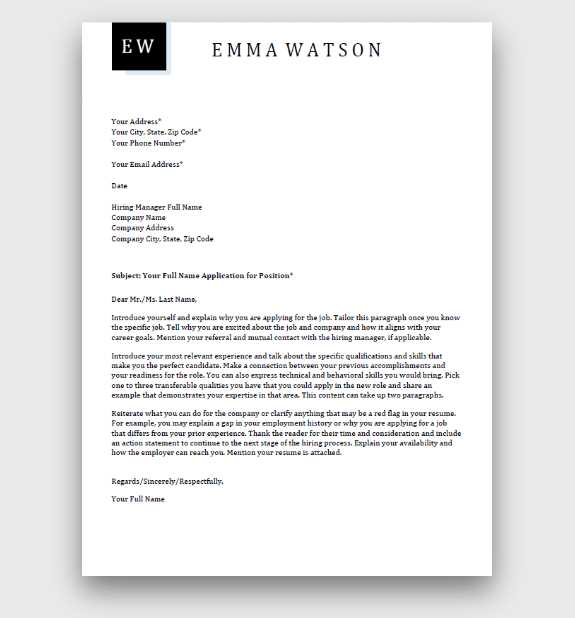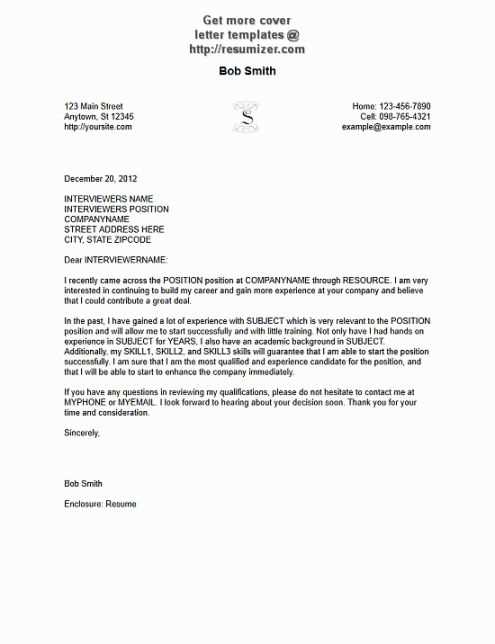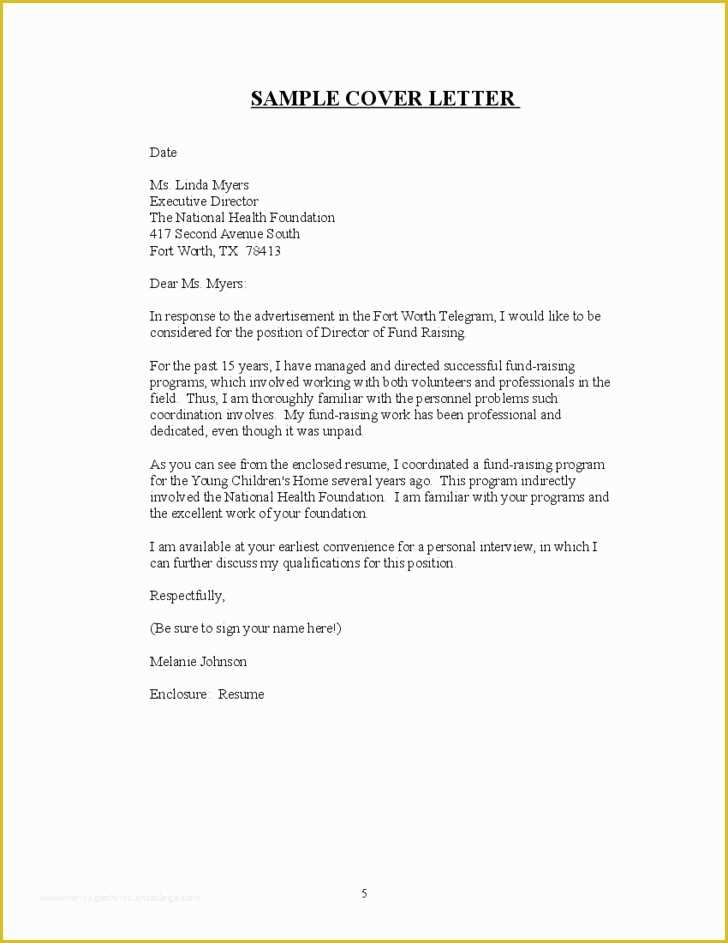Free Sample Cover Letter Templates for Your Job Application

When applying for a new job, presenting yourself in the best light is essential. One key document can make all the difference, showcasing your qualifications and enthusiasm. However, crafting the perfect application can be a daunting task, especially when trying to balance personalization with professionalism.
Using ready-made formats can ease this challenge. They provide a solid starting point, allowing you to focus on tailoring your content rather than starting from scratch. These resources help highlight your skills and experience in a polished and appealing way.
Understanding how to use these tools effectively can increase your chances of standing out. With a variety of styles and structures available, you can select the one that best fits the job you’re targeting, making your application both efficient and impactful.
Why Use Free Cover Letter Templates
Creating an impressive application can be a challenging task, especially when trying to strike the right balance between professionalism and personalization. Utilizing pre-designed documents can significantly simplify the process. These ready-to-use structures give you a solid foundation, allowing you to focus on customizing your message instead of worrying about formatting or style.
Save Time and Effort

One of the main advantages of using pre-designed formats is the time saved. With a well-organized framework, you don’t need to start from scratch, enabling you to quickly get your ideas on paper and refine them later. Here’s how it helps:
- Prevents you from making formatting errors.
- Gives you an outline to follow, reducing the time spent on structuring the document.
- Allows you to focus more on the content rather than the design.
Professional Appearance
These resources are designed by experts, ensuring that your application looks polished and adheres to industry standards. Whether you’re aiming for a creative job or a more traditional role, using a well-crafted document structure can help you stand out in a competitive job market.
- Ensures your document meets professional expectations.
- Gives a visually appealing, consistent format that is easy to read.
- Helps avoid common mistakes that may undermine your application.
Benefits of Customizing a Template
While pre-made structures provide a helpful starting point, tailoring them to fit your personal experience and the specific role you are applying for can greatly improve the effectiveness of your submission. Customizing a format allows you to highlight your unique skills and align your application with the company’s needs.
Personalization makes your application stand out. By adjusting the content to reflect your strengths and qualifications, you can ensure that your application speaks directly to the employer. A generic format may not fully convey why you’re the perfect fit for the job, but personal touches can highlight your suitability.
Enhancing relevance is another major advantage. Customization ensures that every section of your document resonates with the job you’re applying for, allowing you to showcase key attributes that the hiring manager is looking for. This tailored approach shows initiative and attention to detail, which are qualities employers highly value.
- Demonstrates your understanding of the role.
- Increases your chances of catching the employer’s attention.
- Highlights your relevant skills and experiences more effectively.
How to Choose the Right Template

Selecting the ideal format for your application is crucial to making a positive impression on potential employers. The right structure can help you highlight your strengths and match the style of the company you’re applying to. Understanding the purpose of the job and the industry you’re targeting will guide you toward the most suitable choice.
Consider the Industry and Job Type
The first step in choosing the right format is to consider the type of position you’re applying for. A more traditional role may require a formal, structured layout, while a creative position could benefit from a more visually appealing or unconventional design. The following table outlines some key points to consider:
| Industry | Recommended Style |
|---|---|
| Corporate/Finance | Simple, professional, formal structure |
| Marketing/Design | Creative, modern design with some visuals |
| Tech/Engineering | Clean, structured with emphasis on skills |
| Education/Healthcare | Clear, straightforward, focused on experience |
Match Your Personal Style
Once you’ve considered the industry and job role, think about your personal style and how it can be conveyed through the document. A more conservative layout may better suit some applicants, while others might want to incorporate a unique design that reflects their creativity or personality.
Key Features of Effective Cover Letters

An impactful application document must grab the employer’s attention while showcasing your qualifications clearly and professionally. The right balance of structure, clarity, and personalization can make a significant difference in whether your submission stands out. Understanding the essential components that make up an effective application is key to creating a compelling narrative.
Clear and Concise Structure
Employers often skim through applications, so a clean and well-organized document is crucial. Start with a brief introduction, followed by a body that highlights your skills and experience, and close with a strong conclusion that reinforces your interest. Make sure that each section flows logically, and keep your language direct and to the point. Avoid excessive jargon or long-winded sentences.
- Introduction: Briefly state your interest in the position and how you learned about it.
- Body: Focus on relevant skills, experience, and accomplishments that align with the role.
- Conclusion: Reaffirm your enthusiasm and request an interview.
Tailored Content
Effective applications are not one-size-fits-all. To stand out, you must tailor your content to the specific job and company. Highlight the experiences and skills most relevant to the position and show that you’ve researched the company. Customizing your submission demonstrates initiative and a genuine interest in the role, setting you apart from other applicants.
Common Mistakes to Avoid in Cover Letters
Even the most well-meaning application can fall short if it includes avoidable errors. A minor mistake can undermine your professionalism and reduce your chances of getting noticed. Understanding the most common pitfalls will help ensure your submission remains impactful and free from distractions.
Generic Content
One of the biggest mistakes is using a generic, one-size-fits-all approach. Employers can quickly spot a form submission that lacks personalization. Failing to address the specific needs of the job or company signals a lack of effort and interest. Tailor your application to demonstrate how your skills align with the role and show that you’ve researched the company.
- Avoid using vague language that could apply to any job.
- Make sure to customize each document to the specific position.
- Show a clear understanding of the company’s values and needs.
Overloading with Information
While it’s important to highlight your qualifications, providing too much detail can overwhelm the reader. Long paragraphs and excessive lists of responsibilities can dilute the impact of your most important achievements. Keep your content concise, focusing on the key points that make you a strong candidate for the position.
- Stick to the most relevant skills and experiences.
- Avoid repeating information from your resume.
- Use bullet points for clarity and brevity.
Improve Your Chances with a Strong Letter
Submitting a well-crafted document can significantly enhance your chances of standing out in a competitive job market. A compelling application allows you to convey your enthusiasm, professionalism, and suitability for the role. The key is to focus on presenting a concise yet persuasive narrative that aligns your strengths with the needs of the employer.
To create a strong submission, it’s essential to highlight your most relevant qualifications in a way that feels natural and engaging. By demonstrating how your experience directly relates to the position, you can capture the hiring manager’s attention. Additionally, expressing your genuine interest in the company will set you apart from other candidates who may not show the same level of initiative.
When composing your document, make sure to maintain a confident tone without coming across as boastful. Clearly explain how your skills can solve the company’s challenges, and make it evident that you’re eager to contribute to their success. A targeted, professional approach will increase your chances of securing an interview and advancing through the hiring process.